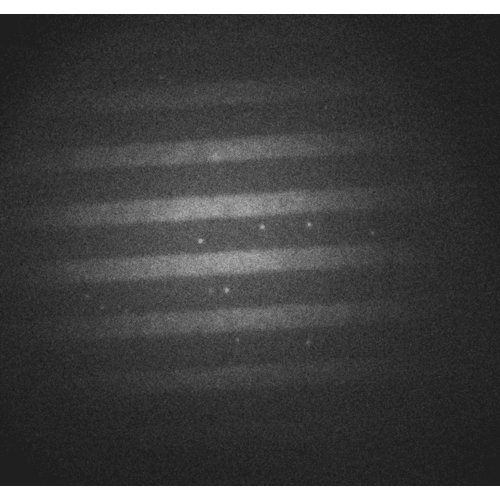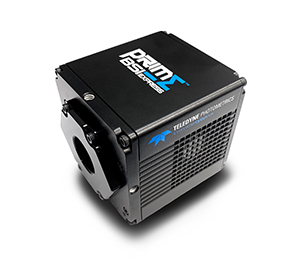Single-Molecule Imaging
Prof. Madhavi Krishnan, Dr. Timothy Bennett
Krishnan Group, Physical and Theoretical Chemistry, Merton College, University of Oxford
Background
The Krishnan Lab, headed by Prof. Madhavi Krishnan, is involved in the study of soft condensed matter at the nan ometre scale, at the University of Oxford. This involves applied physics and photonics, physical chemistry of charg ed interfaces, and single-molecule imaging. This interdisciplinary group works with advanced nanofabrication and opt ics, requiring powerful and sensitive detectors.
Current research areas involve work with single molecules, including spatio-temporal control, trapping, high precision measurements, modeling electrostatics on the nanoscale, and soft matter interactions. By measuring change s in macromolecule electric charge with high precision, the Krishnan Lab aims to read out 3D conformation and small d ifferences of charge in single macromolecules in real-time.

Figure 1: An image taken in the Krishnan Lab with the Prime BSI Express. The image shows
single molecules (bright spots) within fluorescent features on a surface fabricated with nanoscale
channels. The single-molecule signals are clearly visible above the background.
Challenge
Single-molecule imaging presents numerous challenges, as outlined by Prof. Krishnan, "Imaging single molecules labeled with a single fluorophore can be challenging as single fluorophores generally emit relatively weak signals. We also need to work at high speeds to visualize the motion of the molecules."
The low fluorophore density, combined with the weak signal and the need for low exposure in order to achieve high speeds, means that the level of signal is extremely low and any detector used with this system would need to maximize signal collection. In addition, at these low signal levels, noise can have a significant impact and a suitable detector would also need a low read noise, in order to minimize the effects of noise and maintain a high signal-to-noise ratio.
In addition, a large field of view (FOV) would be beneficial as it would allow the capture of more molecules and events with every acquisition. In order to achieve both high speeds and large FOVs, the detector would need a high base speed. Previous EMCCD solutions for this single-molecule work could only reach the required speeds at small FO Vs, limiting throughput.
With the Prime BSI Express our single molecule signals are clearly visible, thanks to the minimal camera noise and high signal collection resulting in high sensitivity.
Madhavi Krishnan, Dr. Timothy Bennett
Solution
The requirement for high sensitivity and high speed across a large FOV makes the Pri me BSI Express an ideal solution. The combination of near-perfect 95% QE for maximizing signal col lection, and the sub electron read noise in CMS mode for minimizing noise levels, make the Prime BSI Express highly sensitive for single-molecule applications.
Combined with this sensitivity, the Prime BSI Express operates at high speeds, 95 fps across the full sensor. T his allows for imaging of fast, dynamic single-molecule events while still mai ntaining a large FOV with a high resolution, thanks to the balanced 6.5 μm pixel size

Learn More About The Prime BSI Express
Download This Customer Story